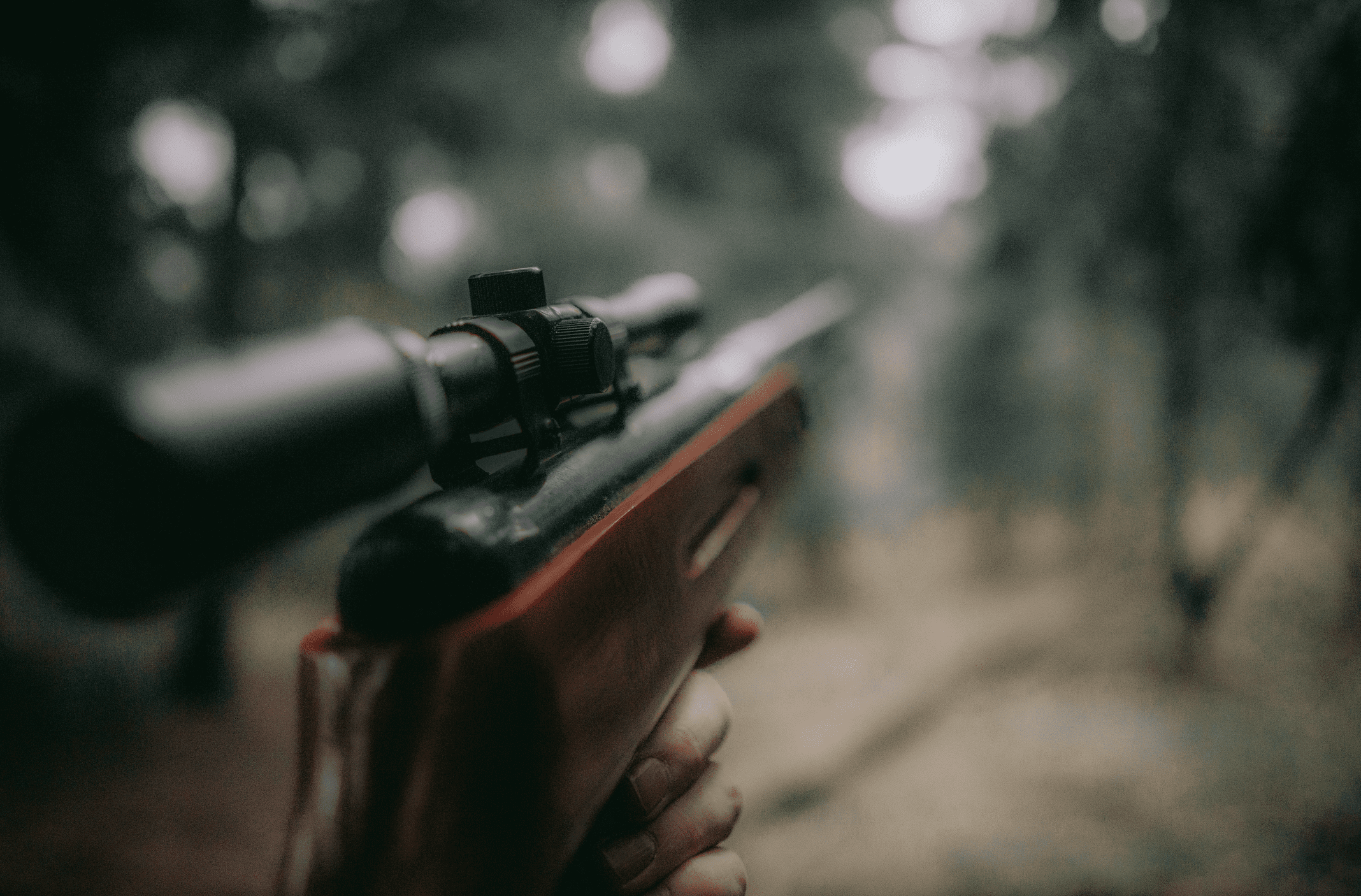If you’re new to hunting, you’ve probably quickly discovered that it can be daunting to know where to start with what rifle and caliber.
A deeper understanding of the basics actually provides a much more fulfilling hunting experience as you learn, discover and dial in the right equipment for the hunt at hand.
So, let’s start with the basics.
What Caliber?
Ammo choice is very important when selecting your gear for a hunt. Using the correct round for the type of game that you will be hunting will greatly increase your odds of a quick, clean kill.
Remember, different ammo is made to do different jobs, and not all cartridges are designed for hunting.
There are a few basic questions you need to answer.
- What size of game will you be hunting?
- What is the recoil?
- How far of a shot will you possibly have to take for a clean and ethical shot?
- Do you want a chambering with a lot of available ammunition?
When talking to other hunters, it becomes even more confusing because everyone has an opinion, it seems. Remember, your friends and family probably have fined-tuned their equipment for their specific needs.
Most importantly, remember that there is no universally perfect caliber. Trust that you, too, will one day have an opinion of your own on ballistic theories to share.
Hunting ammo 101
A typical modern cartridge consists of four components: the case or jacket, the projectile, the propellant and the primer. The makeup of your ammo will depend on the size of game you are hunting:
- Small-game hunting requires ammo with a thin casing and soft core, so it can expand after penetrating smaller targets.
- For much larger game, like Elk, the jacket is thicker, more tapered and often bonded to the bullet itself. The thicker and tapered look allows much deeper penetration, while controlling the expansion to retain the bullet’s weight for maximum impact.
- For game like deer, bullets are generally built with a softer point, as their hides and bones aren’t as thick or tough.
Let’s take a quick look at each component:
Caliber. Caliber ultimately is referring to the internal diameter or bore of a gun barrel, and what diameter of projectiles can be fired through the rifle. Sizes vary, but the 2 most common measurements are in inches and millimeters. For example, a bullet from a .270 Winchester is .27 inches. The higher the caliber, the bigger the bullet and generally the larger the game it can be used for.
Cartridge. Caliber is just one characteristic that makes up a rifle cartridge, which refers to the overall name of the ammunition. It includes the length, diameter and all other specifications for the round. It is very important that you only use a cartridge that is compatible with your rifle. The manufacturer has put a stamp on the rifle for reference, on the barrel itself or on the receiver. Using any other caliber can result in serious injury or even death. For example, if your rifle is a .300 Win. Mag., you must use that cartridge and not other variations, like the .300 Win. Short Mag.
Casing. Coming in different variations of sizes and shapes, the (usually) brass casing simply acts as a container for the propellant powders, and also provides a protective shell. The projectile is attached at the front end and holds the primer at the back end, which receives impact from a firing pin and is responsible for igniting the charge to propel the projectile. Casings differ in shape and length depending on the chambering of the rifle, because different cartridges require different amounts of powder at varying speeds.
Projectiles vary widely and can make a critical impact on your decision, so we’re going to go more in-depth on this component.
The Projectile
The projectile is the effector component of the cartridge and does the ugly work by impacting the intended target.
The term projectile describes any type of kinetic object that is launched into a ballistic flight — your bullet, shot, etc. Your ballistics are based on the projectile. Ballistics have 3 broad categories:
- External ballistics describe the projectile’s motion in flight
- Terminal ballistics describe how it expands at impact
- Internal ballistics describe how it’s ignited and expelled through the firearm
Generally, the projectiles can be categorized in 4 categories:
FMJ (Full Metal Jacket)
The FMJ has a harder outer jacket of copper that encapsulates a softer lead core. The trade-off with FMJ is that the bullet holds its shape when hitting soft targets, not allowing the expansion to create more damage upon the target.
Soft Nose Lead Tipped
Commonly known as soft point, these projectiles have an exposed lead core that is partially encased in a harder copper jacket. Because the lead is exposed, it creates a more reliable expansion. Although a soft point expands upon hitting softer targets, it does so at a much slower rate than a projectile like hollow points.
Hollow Point
If you are into small game, this may be a projectile you fall in love with because it has exceptional stopping power with quicker expansion. The trade-off on this projectile is that it is more fragile, making the ammo more easily damageable with handling and reloading. It’s become one the more popular projectiles for hunting enthusiasts.
Hunters also generally love this projectile because it offers the best of both worlds by combining the benefits of soft point reliability, hollow point lethality, and heightened ballistic performance.
Ballistic Tip
Over the past several years, this tip is rising in popularity amongst hunters. Ballistic tips feature a type of polymer tip that is affixed atop the bullet. The main mission with these topped hollow point rounds is to deliver maximized coefficient ballistics. This tip is more aerodynamic, allowing a more stable flight path for better accuracy.
The Importance Of Recoil
For every action, there is an equal reaction. This is recoil. If you have shot a .300, you know the “kick” well. The most common mistake hunters make is a “bigger is better”mentality. Shooting a larger cartridge with more kick can lead to newer hunters flinching before pulling the trigger, meaning missed shots and ruined hunting trips. You can explore this at a range while you shop for your firearm. If you do choose a larger caliber like a magnum, practicing with it at the range will be important to minimize flinching.
Each cartridge has ballistics information, including fps, which refers to feet per second. The faster the bullet, the flatter the trajectory and more kinetic energy. A 270 Winchester, which has a 130-grain bullet, has a velocity of 3,075 fps.
But the higher the speed, the bigger the recoil. Also, speed also comes with a louder bang and a shorter barrel life.
Consider Ethics
Like personal defense, hunting ammunition’s priority is to quickly and humanely bring down the targeted species. A key difference is the need for additional penetration. While personal defense projectiles are designed to stop human beings, hunting bullets are engineered to penetrate the thick skin, dense muscle tissue and bones of game animals. These bullets are typically heavier than personal defense projectiles and retain more of their weight after entering the target.
Regardless of what you’re pursuing, the highest priority in selecting ammo for hunting should always be ensuring the cartridge or shotgun shell you choose is powerful enough to ensure an ethical kill. Wounding animals is an awful experience for both the animal and the hunter.
Make it quick, clean and safe.
As important, make sure you are aware of state regulations so you can meet any minimum legal requirements for caliber, gauge or the amount of energy produced by the projectile. Laws do vary by state to promote ethical kills, and information can be found in the hunting regulations from your state’s Department of Natural Resources. For example, some states allow the use of .22 caliber centerfires, such as the .223. Others require a minimum of a .243 caliber rifle.
Again, this summary is to help you make the decision — not to make the decision for you. Enjoy the process. Enjoy the hunt. And enjoy the stories that come with it. Remember, it’s more than just pulling the trigger on a kill … and a deeper understanding makes it even more rewarding.
Have fun, and be safe.




